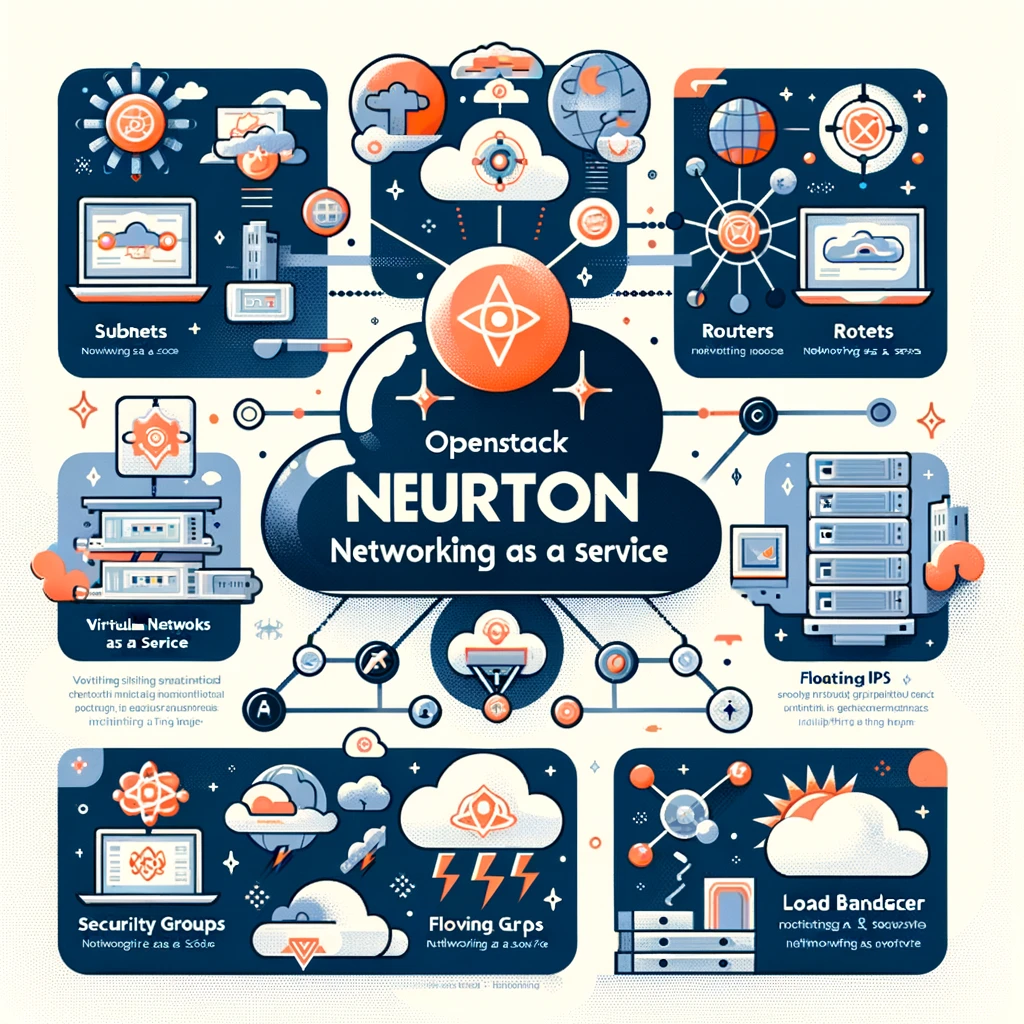Table of Contents
Exploring OpenStack Neutron – Networking as a Service
In the diverse ecosystem of OpenStack, Neutron stands out as a pivotal component, orchestrating complex networking services and enabling cloud infrastructures to deliver Networking as a Service (NaaS). This comprehensive guide delves into the essence of OpenStack Neutron, exploring its role, distinctive features, and the management of network services within the OpenStack platform.

Introduction to OpenStack Neutron
OpenStack Neutron, initially known as Quantum, is the networking counterpart in the OpenStack ecosystem that provides the networking platform for connecting devices managed by other OpenStack services like Nova (compute service). It allows users to design and deploy a variety of network topologies and offers an extensible API that lets developers enhance functionalities and services.
The Role of Neutron in OpenStack
Neutron plays a critical role in managing the network stack of the cloud environment, offering users the flexibility to create complex network topologies, define network capabilities, and implement advanced networking features such as: Virtual Networks: Create isolated networks that various tenant projects can use, ensuring secure communication channels within the cloud environment.
Subnets and IP Address Management (IPAM): Manage IP addresses, allowing for automatic or manual allocation of IPs to instances.
Router and Floating IPs: Enable external network access for VMs and facilitate inter-tenant communication.
Security Groups and Firewall as a Service (FWaaS): Enhance security by controlling access to instances and protecting network resources.
Key Features of OpenStack Neutron
Neutron is designed with flexibility and modularity at its core, boasting several features that cater to diverse networking needs: Pluggable Architecture: Supports various networking technologies and vendors through its pluggable backend architecture, allowing for a wide range of network implementations.
Tenant Networks: Offers multi-tenant isolation, enabling each tenant to have its own private network space within the cloud.
Load Balancer as a Service (LBaaS): Distributes incoming network traffic across multiple instances, ensuring reliability and availability.
VPN as a Service (VPNaaS): Provides secure connections between private networks over the internet, facilitating secure communication.
IPv6 Support: Offers full IPv6 support for networks, subnets, and routers, addressing the growing need for more IP addresses and enhanced security.
Managing Network Services in OpenStack Neutron
Managing network services with Neutron involves several tasks, from creating networks and subnets to managing routers and security groups. Here’s how to manage essential network services:
Creating Networks and Subnets:
Networks are created to connect virtual machines to each other and to the outside world.
Subnets define the IP addresses that can be used within the network, including DHCP settings.
Setting Up Routers:
Routers connect different networks within Neutron, enabling instances in private networks to communicate with the external network.
Floating IPs can be associated with instances through the router, allowing access from external networks.
Configuring Security Groups:
Security groups act as virtual firewalls for instances, defining which incoming and outgoing network traffic is allowed.
By default, all incoming traffic is denied, and outgoing traffic is allowed, which can be customized as per requirements.
Implementing Load Balancers:
Load balancers distribute incoming traffic among instances, improving the availability and reliability of applications.
LBaaS allows for easy setup and management of load balancers within the OpenStack environment.
Conclusion
OpenStack Neutron, with its comprehensive networking capabilities, stands as a cornerstone of the OpenStack cloud computing platform, enabling flexible, scalable, and secure network infrastructures. Whether you’re setting up a private cloud or deploying a complex multi-tenant cloud environment, Neutron provides the tools and flexibility needed to tailor your network precisely to your requirements. By mastering Neutron, cloud administrators and architects can ensure their OpenStack deployments are not only powerful and efficient but also secure and compliant with modern networking standards.
Blog Home
